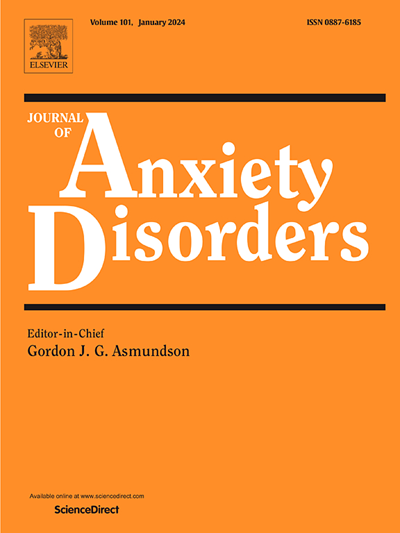The effects of intelligence on exposure to combat and posttraumatic stress disorder across multiple deployments
IF 4.5
2区 医学
Q1 PSYCHIATRY
引用次数: 0
Abstract
Introduction
Past work relates intelligence quotient (IQ) to risk for Post-Traumatic Stress Disorder (PTSD) among soldiers. We gathered data over multiple deployments to assess how IQ relates to the rate of symptom development both directly and through increasing the risk for traumatic combat exposure.
Methods
Male infantry soldiers from a maneuver brigade (N = 582) were followed over the 3-year period of their mandatory military service. Data were collected at 3-time-points: 1) shortly after enlistment and before deployment; 2) about 15 months into the service following one deployment, and another year later following additional deployments. IQ was measured before recruitment into the military; PTSD symptoms and combat exposure were measured at each time-point.
Results
Lower general IQ, and in particular lower abstract reasoning capabilities, related to steeper increases in PTSD symptoms, TIME×IQ= -.05, SE= .02, t(442.79) = -3.255, p < .01, controlling for the effect of pre-military traumatic experience. This relation was partly mediated by combat exposure, Effect= -.04, BootSE= .01, 95 % CI [-.06, −.02].
Conclusion
The results identify important risk factors for PTSD that can inform approaches to PTSD mitigation in the military and other organizations. Given that this study enrolled a male sample the generalizability of the results awaits further research.
智力对战斗暴露和创伤后应激障碍的影响。
简介:过去的研究将智商(IQ)与士兵创伤后应激障碍(PTSD)的风险联系起来。我们收集了多次部署的数据,以评估智商与症状发展速度的直接关系,以及通过增加创伤性战斗暴露风险的关系。方法:对某机动旅男性步兵(N = 582)进行为期3年的兵役随访。在3个时间点收集数据:1)入伍后不久和部署前;2)在一次部署后服役大约15个月,在其他部署后服役一年。智商是在被征召入伍前测量的;在每个时间点测量创伤后应激障碍症状和战斗暴露。结果:较低的一般智商,特别是较低的抽象推理能力,与PTSD症状的急剧增加有关,TIME×IQ= -。05年,SE = 。02, t(442.79) = -3.255,p 结论:研究结果确定了创伤后应激障碍的重要危险因素,可以为军队和其他组织提供缓解创伤后应激障碍的方法。鉴于这项研究招募了男性样本,结果的普遍性有待进一步研究。
本文章由计算机程序翻译,如有差异,请以英文原文为准。
求助全文
约1分钟内获得全文
求助全文
来源期刊

Journal of Anxiety Disorders
Multiple-
CiteScore
16.60
自引率
2.90%
发文量
95
期刊介绍:
The Journal of Anxiety Disorders is an interdisciplinary journal that publishes research papers on all aspects of anxiety disorders for individuals of all age groups, including children, adolescents, adults, and the elderly. Manuscripts that focus on disorders previously classified as anxiety disorders such as obsessive-compulsive disorder and posttraumatic stress disorder, as well as the new category of illness anxiety disorder, are also within the scope of the journal. The research areas of focus include traditional, behavioral, cognitive, and biological assessment; diagnosis and classification; psychosocial and psychopharmacological treatment; genetics; epidemiology; and prevention. The journal welcomes theoretical and review articles that significantly contribute to current knowledge in the field. It is abstracted and indexed in various databases such as Elsevier, BIOBASE, PubMed/Medline, PsycINFO, BIOSIS Citation Index, BRS Data, Current Contents - Social & Behavioral Sciences, Pascal Francis, Scopus, and Google Scholar.
 求助内容:
求助内容: 应助结果提醒方式:
应助结果提醒方式:


